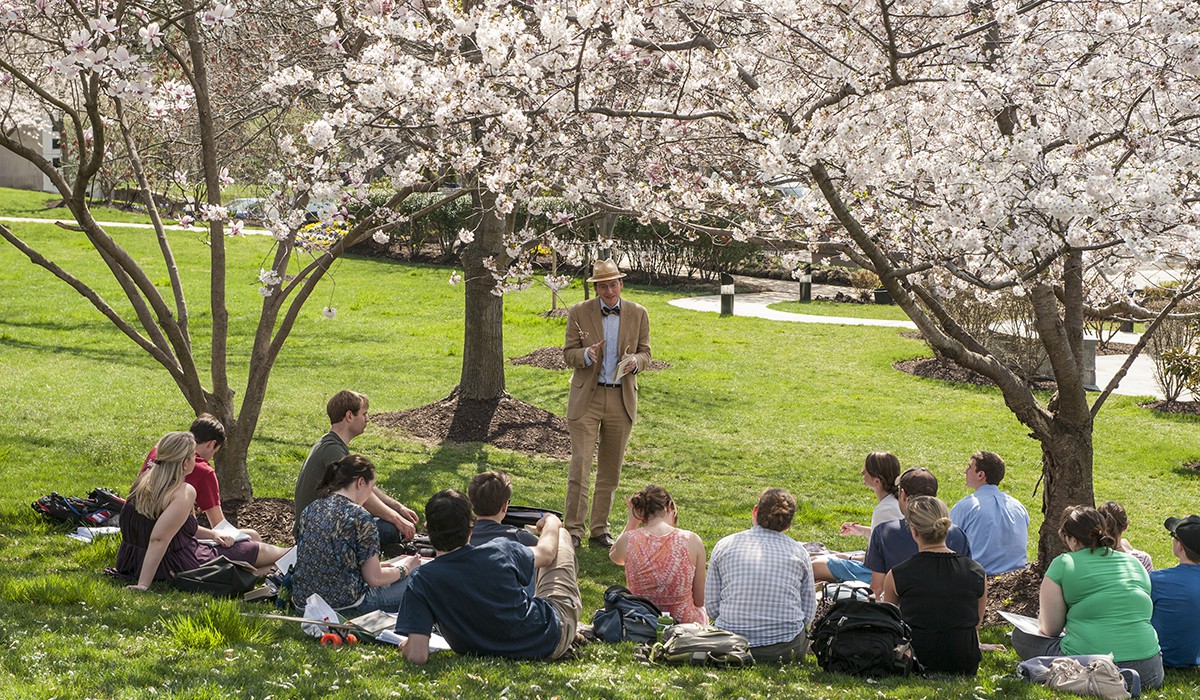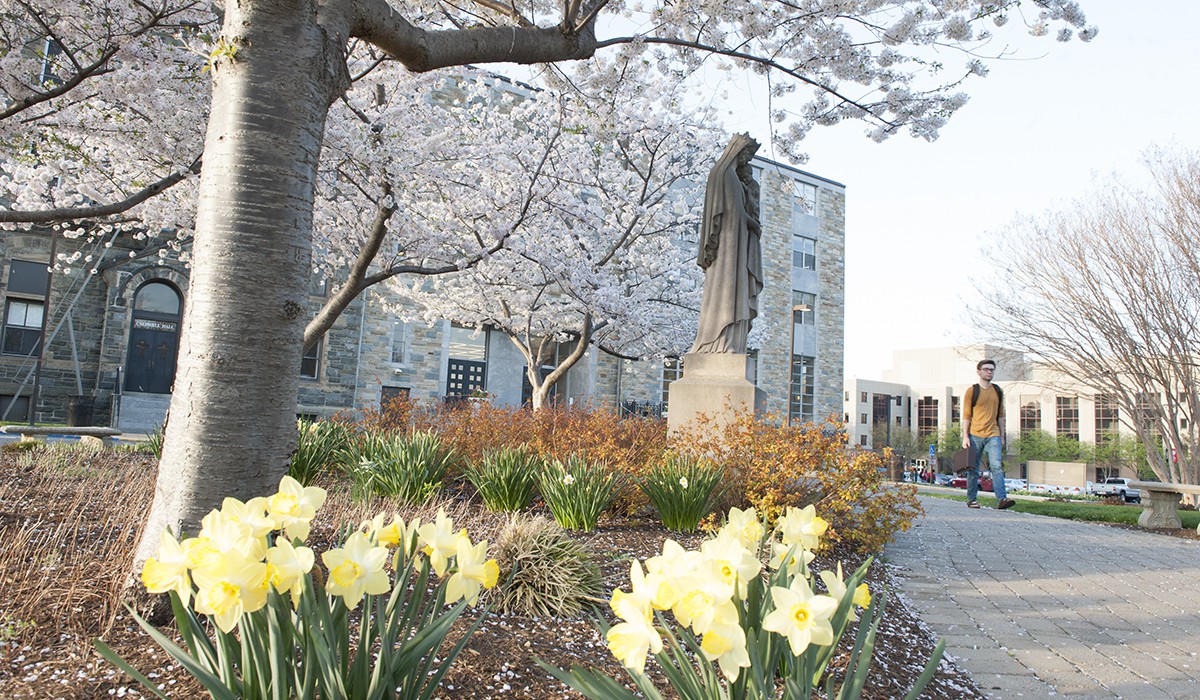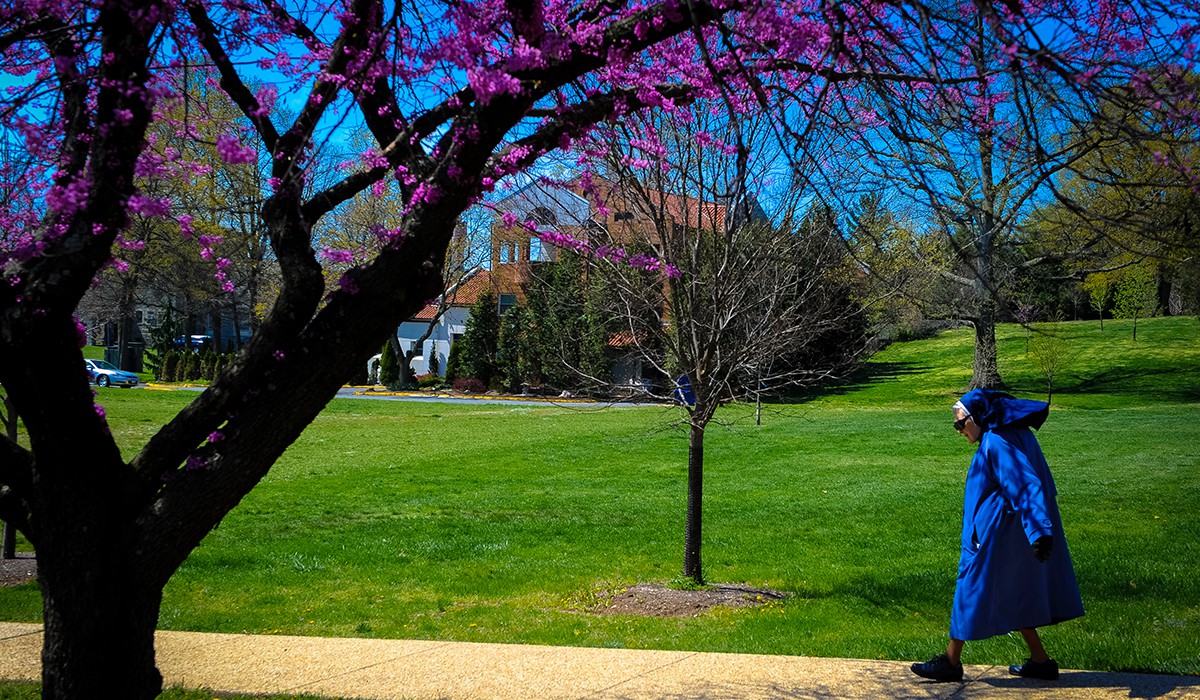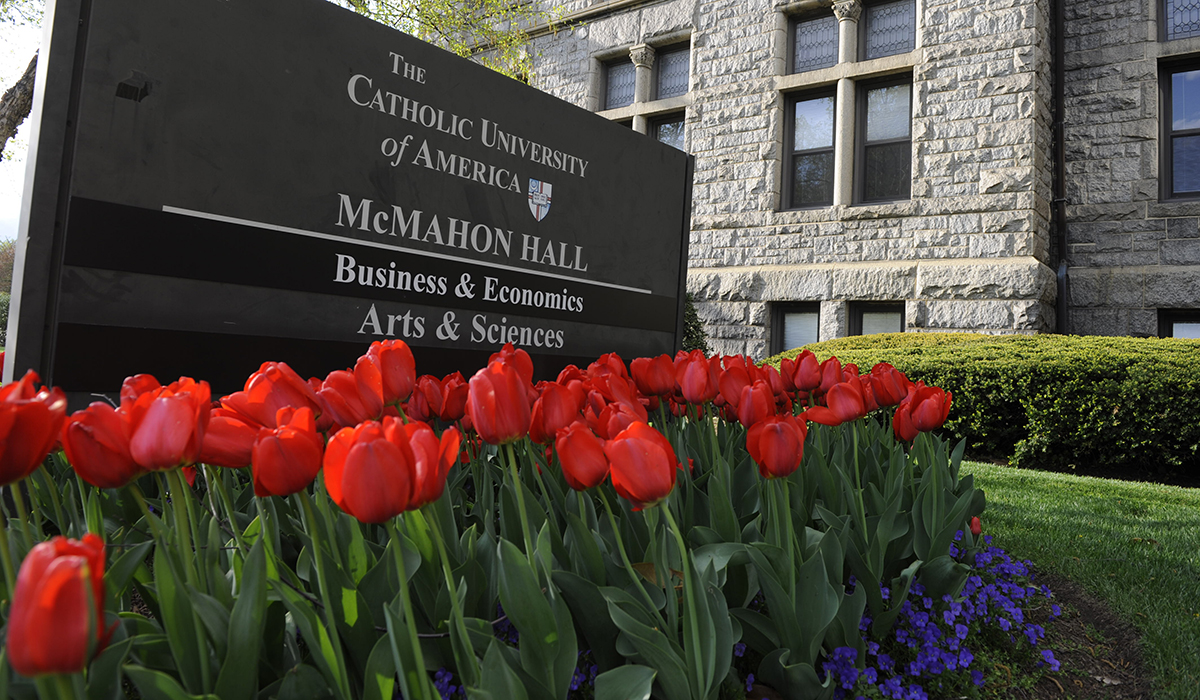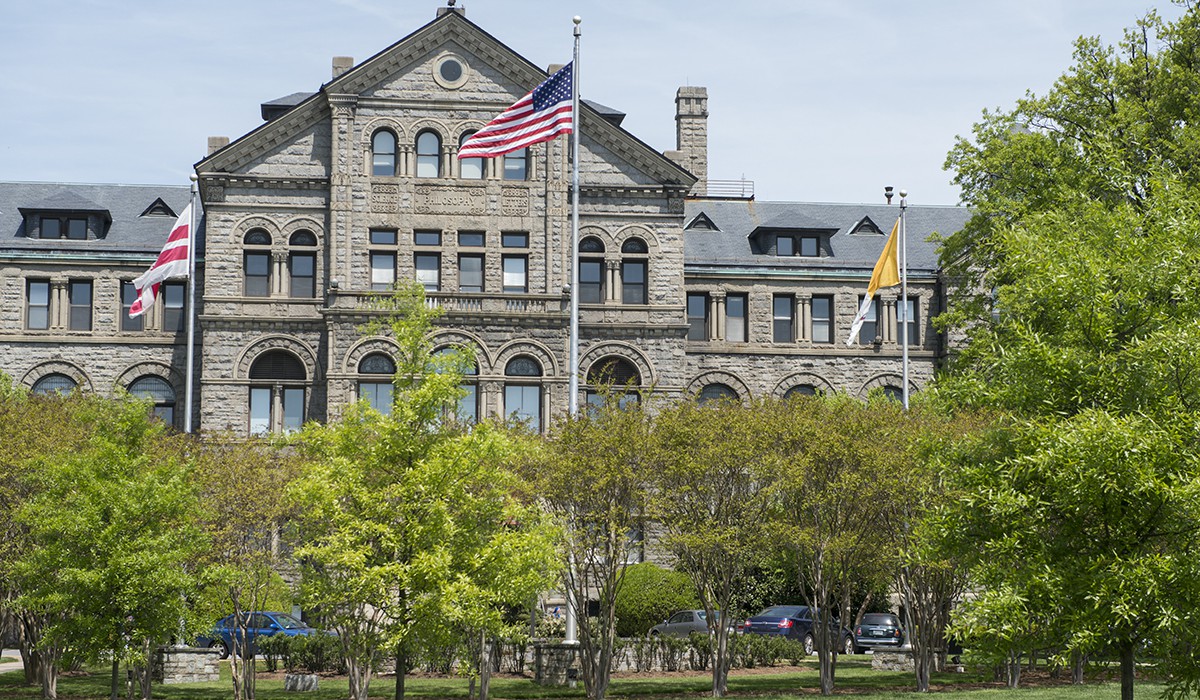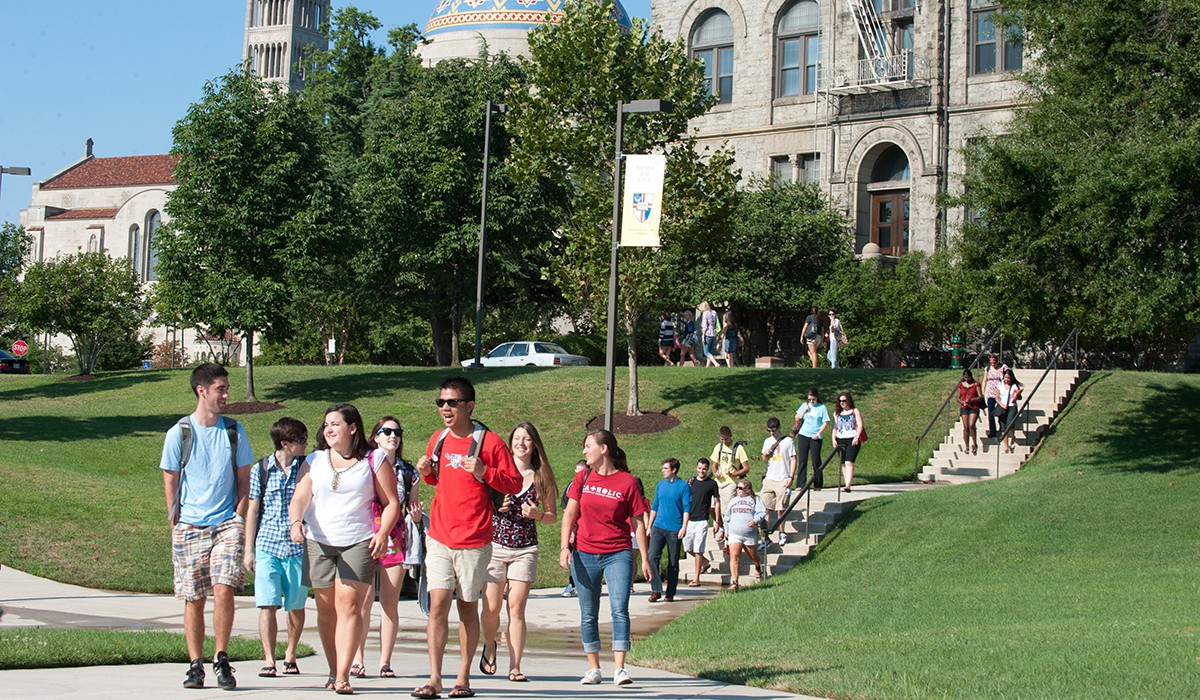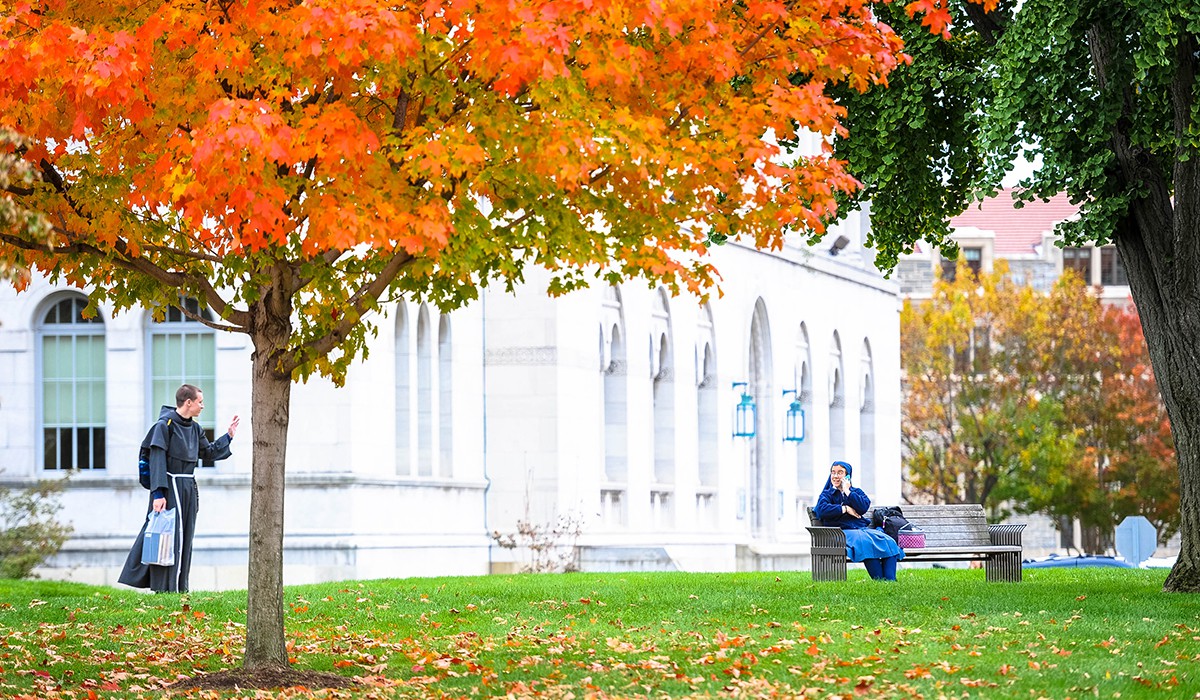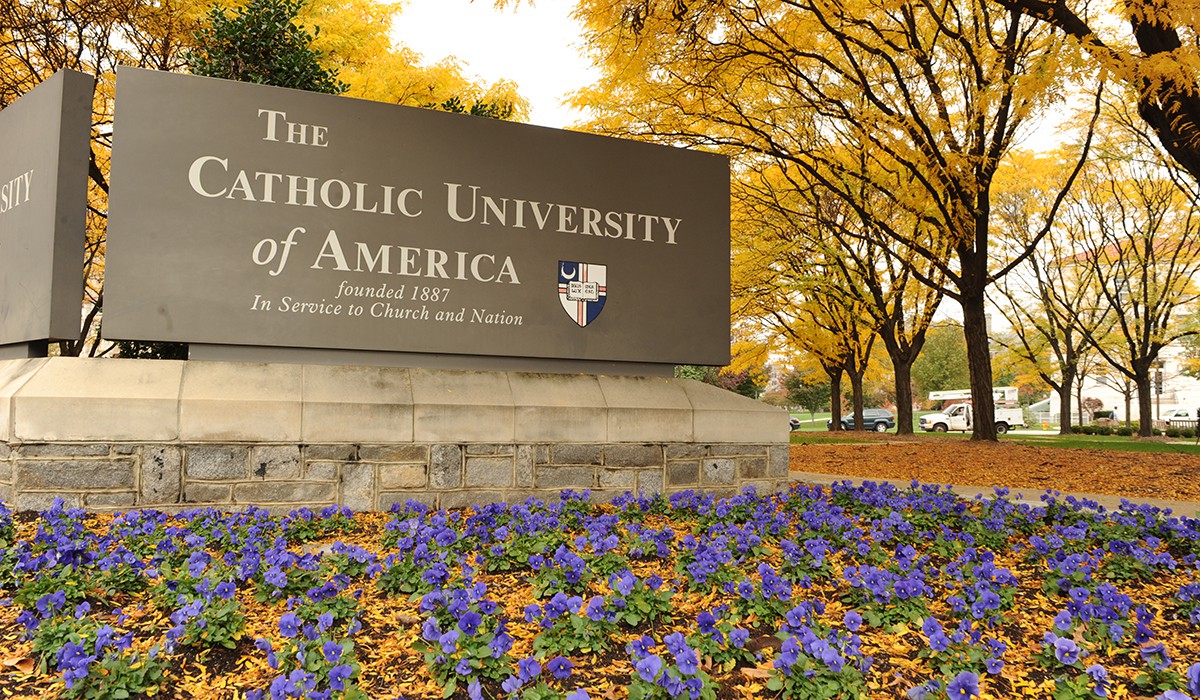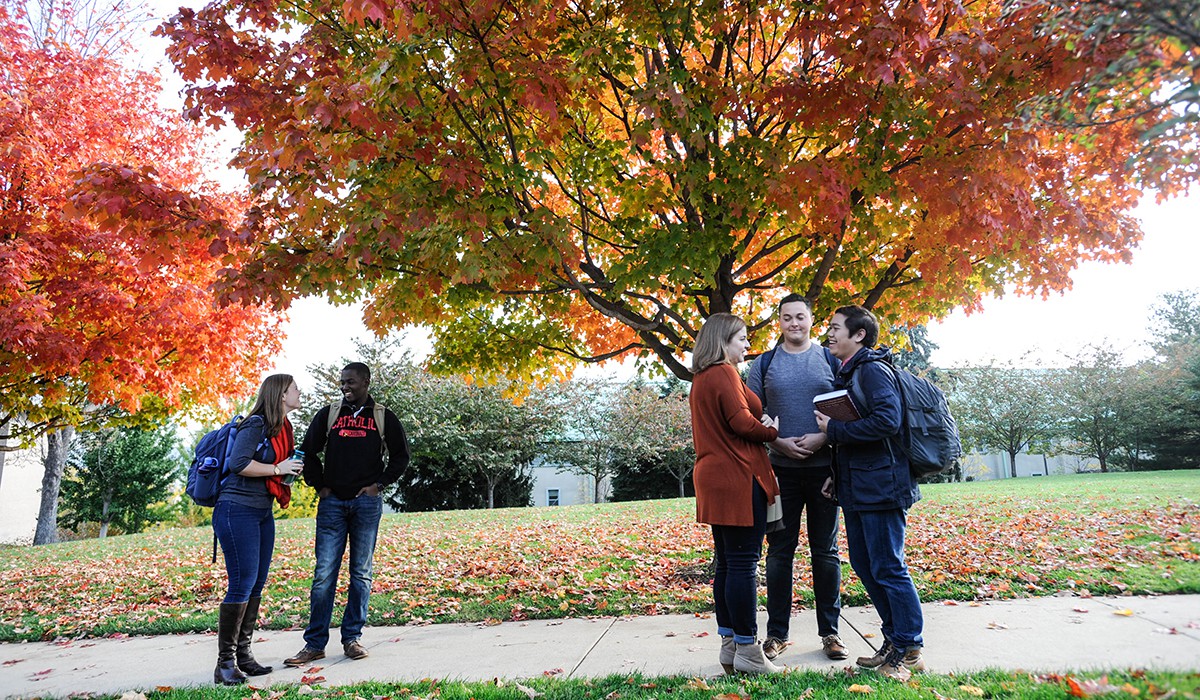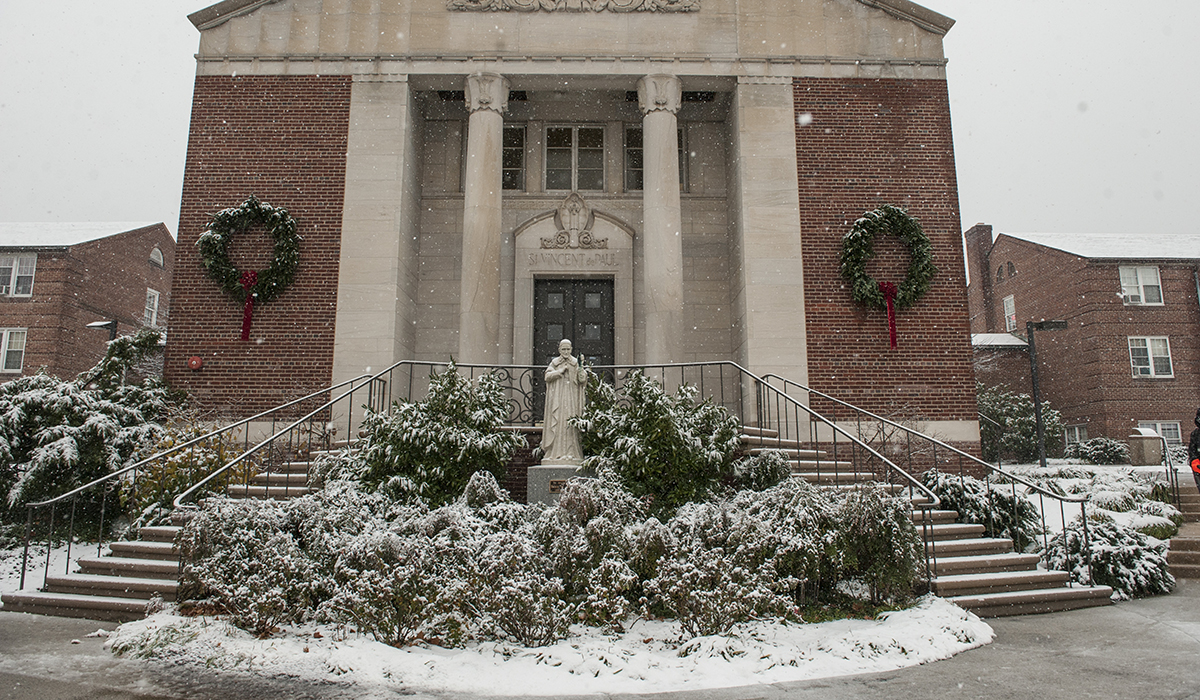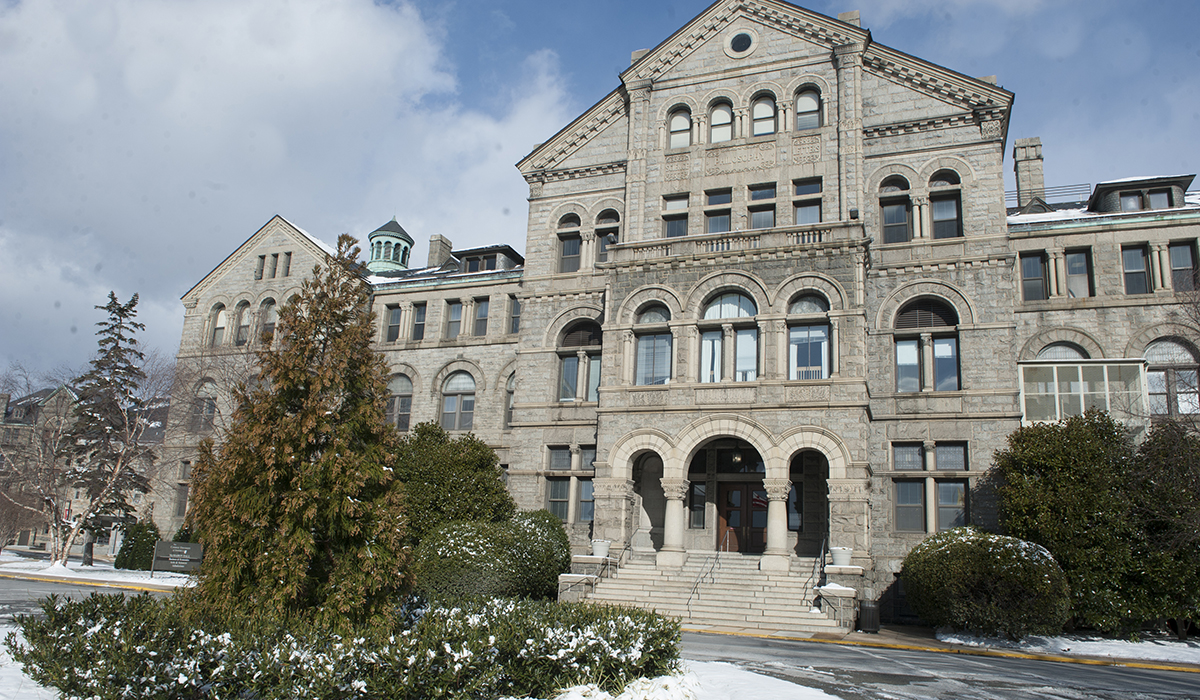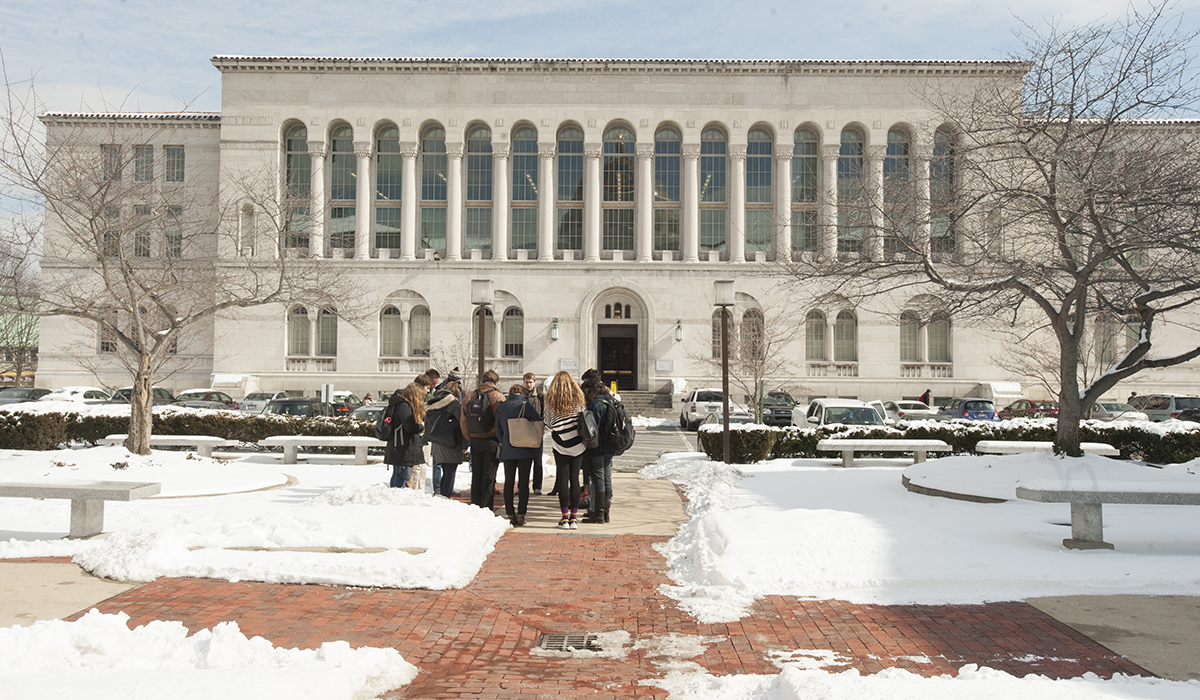

In the John K. Mullen of Denver Memorial Library, there is another library, one separate from Catholic University’s main collections housed on the floors above. It is filled with rare books, manuscripts, maps, photographs, artwork, and ephemera that once belonged to Brazilian diplomat, historian, and journalist Manoel de Oliveira Lima.
More than 60,000 printed works line the shelves of the four rooms that make up the Oliveira Lima Library. There are more than 700 manuscripts, letters from more than 1,400 correspondents, 60 scrapbooks, and a collection of art, maps, and photographs from the 19th and early 20th century. Oliveira Lima and his wife, Flora, corresponded with book dealers on three continents, made many purchases, and took great pride in building their collections. They understood that the items they acquired, even postcards, had future importance in preserving and interpreting the historical record.
Thomas Cohen, the Oliveira Lima Library’s director and associate professor of history, says the collection is a treasure of information related to the history and culture of Brazil and Portugal.
“Outside of Portugal and Brazil, few libraries are stronger than this one in terms of material related to those countries,” he explains. “The Oliveira Lima Library has a lot of unique materials that aren’t found anywhere else, including in Brazil and Portugal.”
It was nearly six years ago that Cohen was contacted by Gale, part of Cengage Learning, an educational content, technology, and services company that creates digital products that enable users to access and use unique research resources. Gale expressed interest in digitizing a significant portion of the Oliveira Lima Library to complement other one-of-a-kind collections in their product line.
“Gale goes all over the world digitizing primary source material,” says Cohen, who has headed the library since 1990. “They’ve worked with National Geographic, the Smithsonian Institution, and many universities. They approached me to see if I would be interested in an ambitious digitization project for the Oliveira Lima Library. I said that I had a strong interest but that we had staff limitations and it would be something we would have to work out carefully.”

By partnering with staff from the University Libraries, Cohen was able to jumpstart the project. University Librarian Stephen Connaghan, and Joan Stahl, director of research and instruction, worked with Cohen and Gale on a contract that identified materials for digitization and procedures for scanning and preserving them. Stahl served as project manager for CUA.
Those involved agreed that the library’s collection of pamphlets would be a good place to begin. This large collection of 19th-early 20th-century ephemera covers topics such as politics, history, economics, agriculture, medicine, and literature, but many titles are in poor condition.
“The pamphlets weren’t going to improve over time in their condition,” Stahl says. “The paper on which they are printed is poor quality. They were deteriorating almost in front of our eyes.”
In their discussions with Gale, CUA staff negotiated to improve both the storage of and access to the titles.
“We wanted to get better bibliographic control for the materials so we arranged to have barcodes put on them,” Stahl explains.
The pamphlets were carefully packed up and shipped to a facility in New Jersey for digitization. In six months, more than 2,500 items were scanned.
The final product, Brazilian and Portuguese History and Culture: The Oliveira Lima Library, is sold as a stand-alone product, but is freely available to the entire CUA community with a link on both the University Libraries’ and Oliveira Lima Library’s website. The collection is introduced with a short, informative essay by Maria Angela Leal, assistant curator of the Oliveira Lima Library.
The process has produced numerous benefits, including improved access to the library’s materials for a wider audience. Now that the pamphlets are available digitally, they don’t need to be handled as much by researchers. The library can provide electronic copies of the materials to those interested. Researchers who wish to consult the printed pamphlets, however, are still able to do so.

Researchers also can search across the collection more easily thanks to Gale’s database. A search can quickly pull up items related to a topic of interest, whether it’s located in the Oliveira Lima Library or in a related collection that has also been scanned by Gale.
Stahl points out that digitizing the collection can provide even more insight into a particular item.
“With a digital item, you can zoom in on the material,” she explains. “If someone has written a note on the page or in the margin area and you can’t really read it, now, because it’s digitized, you can enlarge it. You might discover things that you would not otherwise have discovered.”
“There are tradeoffs with digitization,” Cohen adds. “It’s not necessarily second best to working with the original object. You can do research on a primary source at any time, anywhere in the world.”
A final benefit to the process has been a strengthened working relationship between this special collection and the University Libraries.
“This project wouldn’t have been possible without the collaboration of the University Libraries,” Cohen says. “It shows what a productive relationship we can have when we work together.
Cohen says the next step is to digitize the library’s manuscripts and a large collection of its rare books. He anticipates that phase to be completed by April 2016.
Cohen and Stahl say they both hope that broader access to the library will introduce people to Manoel de Oliveira Lima and the importance of the materials in the collection.
“I hope [digitization] is a window into this collection and that people researching any number of topics might find out that this collection exists,” Stahl explains. “It’s kind of a hidden treasure on our campus.”
“This collection had one man’s vision behind it,” Cohen adds. “I hope people who interact with this collection understand that one man, with important collaboration from his wife, was able to put together this valuable collection over the course of 50 years. All the materials in the collection, from the printed materials to the manuscripts to the photographs and artwork, have great research value.”
For more information about the Oliveira Lima Library, visit libraries.cua.edu/oliveiralima/index.cfm.
